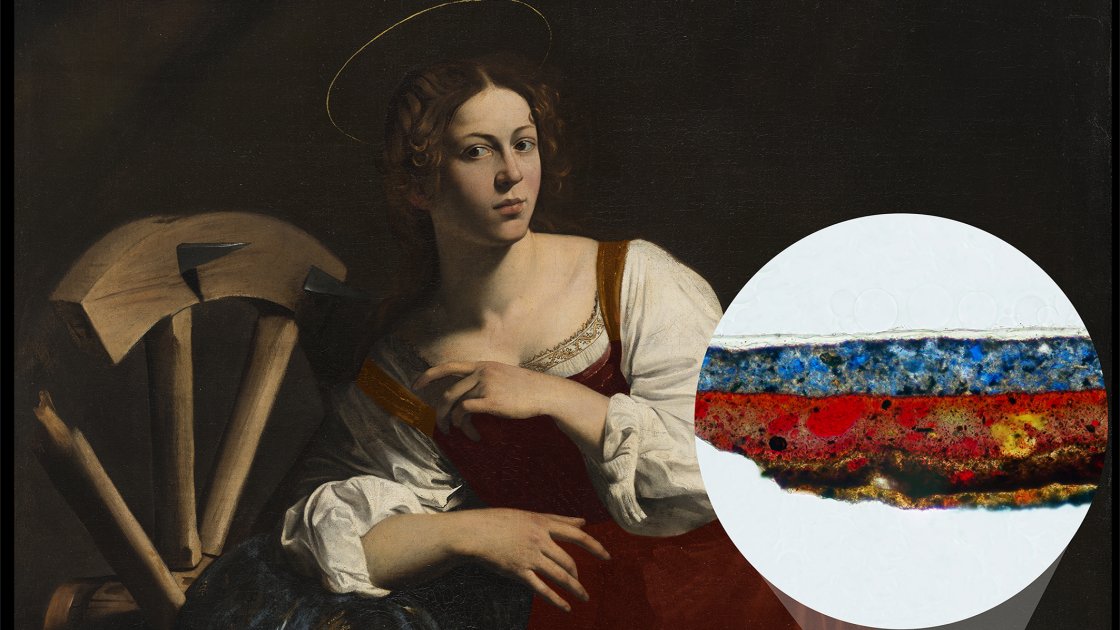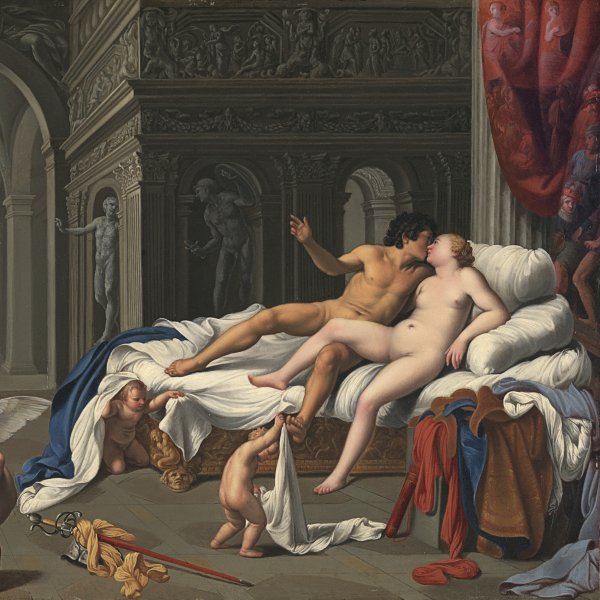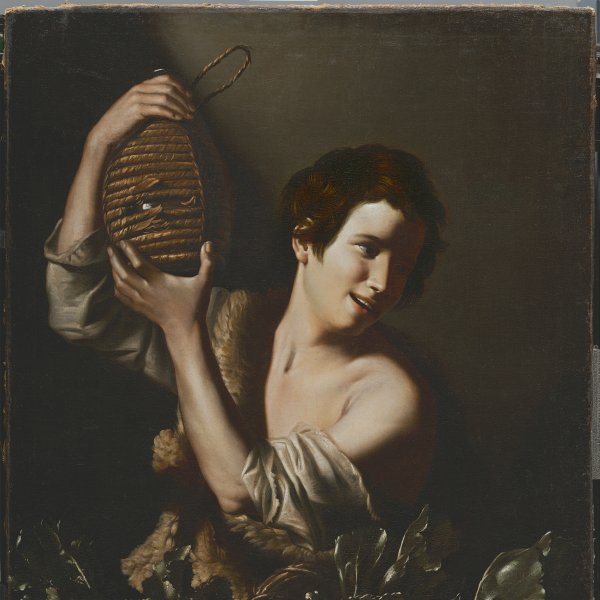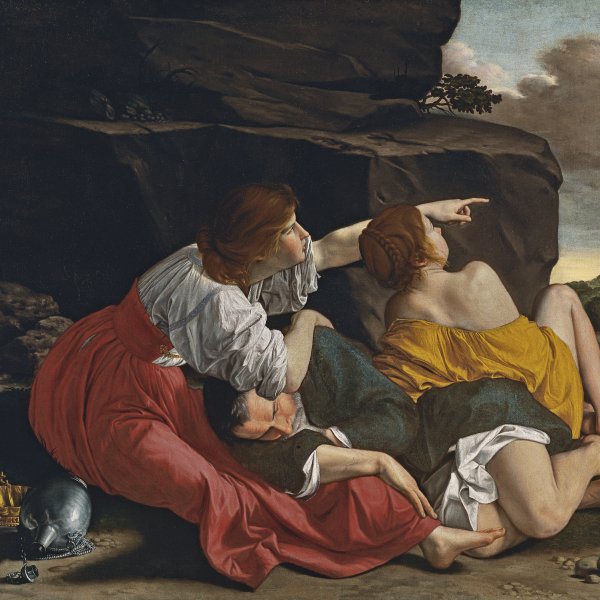Saint Catherine of Alexandria
This painting was almost certainly commissioned in Rome by Caravaggio’s first patron, Cardinal Francesco Maria del Monte. Captured in a strikingly natural pose, the figure of St Catherine has been identified as Fillide Melandroni, a celebrated courtesan of the time. Richly dressed in robes befitting a princess, and kneeling on a cushion, she gazes out at the viewer surrounded by the attributes of her martyrdom: the breaking-wheel, the sword with which she was beheaded and the martyr’s palm. The dramatic lighting of the scene creates a chiaroscuro effect characteristic of Caravaggio, whose approach to light and volume—evident in this canvas—was to have considerable impact both in Italy and throughout Europe.
Saint Catherine of Alexandria by Caravaggio is one of the works in the Collection whose complete provenance allows its history to be traced almost from the time it was painted to the present day. The canvas is recorded among the possessions inventoried on the death of the artist’s first important patron in Rome, Cardinal Francesco Maria del Monte, and again on the death of his heir, Uguccione del Monte in 1626. In 1628, the date of a further inventory, it was sold, along with other paintings, to pay some of the Cardinal’s heir’s debts. It would seem to have been acquired by Cardinal Antonio Barberini, and appears in Barberini family inventories in 1644, 1671 and 1817. In his Lives, Bellori noted that Caravaggio painted for Cardinal del Monte, “a kneeling saint Catherine, leaning on a wheel”, commenting that this painting and one of a lute player (probably from the Barberini collection and now in The Metropolitan Museum of Art) “have a more dense use of colour, as Michele had now begun to strengthen his shadows”. Saint Catherine passed from the Barberini collection onto the art market and was acquired for the Thyssen-Bornemisza collection in 1934 from a gallery in Lucerne.
The painting has been the subject of numerous commentaries since it was mentioned by Bellori in 1672 and the extensive literature on the painting has discussed not only the attribution and date of the work but also the way in which Caravaggio approached the subject. In 1916, Roberto Longhi, one of the great Caravaggio scholars, considered that the canvas might be by Orazio Gentileschi but later studies confirmed the attribution to Caravaggio. However, the painting was included as a work by the School of Caravaggio in the Mostra della pittura italiana del Seicento e del Settecento held at the Palazzo Pitti in Florence in 1922. However, that same year, Marangoni stated that the work’s high quality indicated that it was an autograph production by Caravaggio. In the present day this opinion has been maintained without any reservations by experts on the artist.
The canvas has been dated to shortly before the major cycle that Caravaggio produced for the Contarelli chapel in San Luigi dei Francesi in Rome at a time when his style was moving towards a use of more compact forms constructed from a powerful chiaroscuro that emphasised the expressivity of his compositions. Saint Catherine, depicted here richly dressed as befitting a princess and kneeling on a costly red damask cushion, seems to be looking directly at the viewer. Her clothing has been compared to that of the Pentinent Magdalen by Caravaggio in the Galleria Doria Pamphilj in Rome. The colour range used for her garments, which combines blues and violets, is typical of northern Italian painting. The saint can be identified by her traditional attributes of the broken, spiked wheel, the sword with which she was beheaded, and the palm of martyrdom. The interplay of oblique lines established between the instruments of her torture, the slanting position of her body, the direction of her gaze and the ray of light that illuminates her figure create a highly successful compositional in visual terms, to which the strong modelling created by the chiaroscuro undoubtedly contributes.
It has been noted that the light source falls in this work from the right, which is unusual in Caravaggio’s oeuvre. This detail has led to the suggestion that the painting was designed for a specific location, to which the artist adapted the composition, as in other paintings.
The female model used for the saint has been compared to the one in two other paintings of this period. They are Martha and Mary Magdalene in the Detroit Institute of Arts, and a female portrait that was in the Kaiser-Friedrich-Museum in Berlin (lost in World War II but known through photographs). Two suggestions have been made regarding the real identity of this female model: Caterina Campani, wife of the architect Onorio Longhi, a hypothesis rejected in the present day, and Fillide Melandroni, a courtesan who moved in circles close to Caravaggio. There is a copy of this canvas in the Museo Nacional del Prado (on deposit with the church of San Jerónimo el Real, Madrid).
Mar Borobia
More details about Saint Catherine of Alexandria














